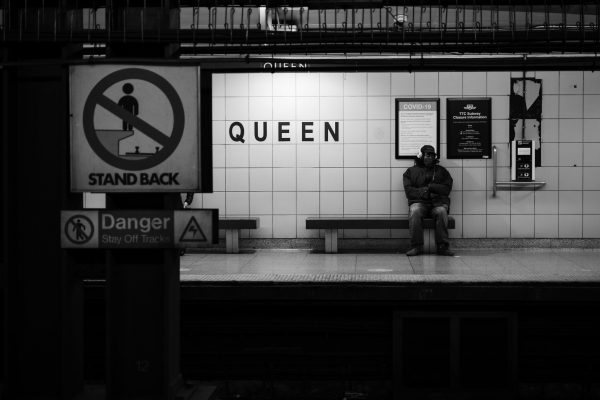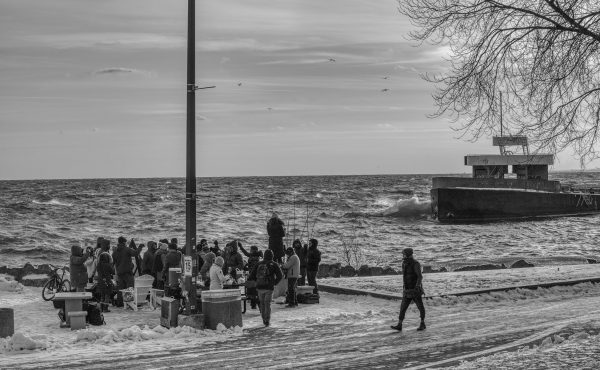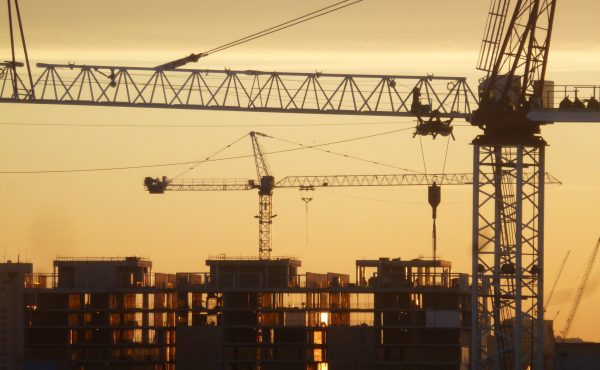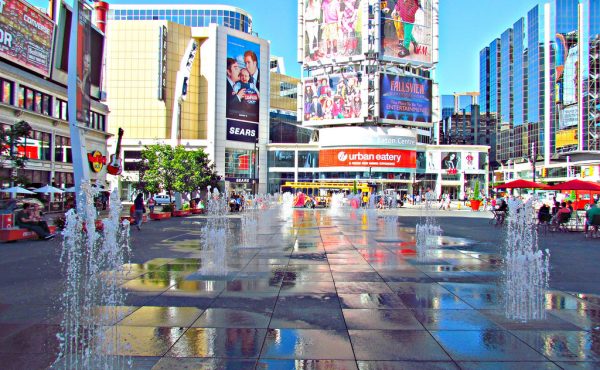According to new data from the TTC released last week, the number of violent incidents on the system rose 46% in 2022 compared to the year previous. Attacks on employees, meantime, rose more or less steadily throughout the pandemic, with 94 offences recorded in December. (The rate of offences per 100 employees has dropped somewhat.)
For the past few years, I have worked as an electrician for various contracting companies working on transit infrastructure in Toronto. And, as essential worker, I took transit almost daily through the entire pandemic. I am a long-time anti-poverty activist, writer and organiser, and I am ex-military. I am not a person who is scared easily.
But the situation on public transit is getting worse — a feeling that was confirmed by a TTC worker friend. I asked him if the recent media attention was scare-mongering or cherry-picking incidents. “It’s`absolutely worse,” he confirmed. By global standards, Toronto is still a very safe city, but there are bad vibes, and much worse, on the transit and in the streets these years.
Cutbacks to transit are cutbacks to public safety. According to TTC Riders, city council is proposing a 9% reduction in service compared to pre-pandemic levels, with up to ten minute wait times for subways, which will mean even longer waits for bus riders. I was on the Queen bus recently with my small child when a dishevelled man repeatedly threatened to rape and murder everyone on the bus.
The driver, as well as all the passengers, seemed terrified, but the driver also seemed afraid to stop and call for help, afraid it would escalate the situation. On that occasion, my child and I were able to get off that bus. But sometimes, I’m in a situation where taking the next bus means being late for work, which, in my industry, can get me fired. Fewer buses increases overcrowding, which increases the possibility of conflict, and makes people vulnerable when they’re waiting at stops for longer.
Some of the safety concerns are certainly due to the partial social breakdown of the pandemic. But others are a predictable result of service cutbacks and automation. Transit gates at many stations have moved to PRESTO-only. The new subways and streetcars trains hide the train operator from the passengers, and trains now have only one operator. GO Train stations, platforms and tunnels can seem entirely abandoned at times.
The effect of automation and de-staffing did not appear immediately. But over time, the absence of staff took eyes off the street, i.e., the opposite of Jane Jacobs famous saying. “One person train operation on the Yonge-University-Spadina [Line 1] has made things a lot more dangerous for drivers,” my TTC worker friend says. “I don’t know why we haven’t done more to speak out and organise and fight back.”
As drivers, ticket collectors and other staff disappeared from view, they were replaced with para-police ticket inspectors. Many people — especially Black and Indigenous people, people with immigration status concerns, and homeless and other low-income people — see the transit ticket police as a threat, not an addition to safety. And there have been some sightings, posted on Reddit and the CBC, of heavily armed police officers armed with what appear to be C8 carbines — a version of the AR-15 rifle — standing at subway stations.
We know what happened when Const. James Forcillo used a pistol to confront Sammy Yatim, an 18-year-old in distress, on the Dundas streetcar back in 2013. Yatim’s killing, and other police involved deaths were triggers for the racial justice and Black Lives Matter movement, but the problem of violent police intervention in mental health issues continues, especially where Black and Indigenous people are involved.
What is the tactical justification for rifles or other weapons? There is none: the attacks that have been taking place have involved broken bottles, bare hands, a hammer, knives, and in one case a BB gun — nothing that requires an increase in police armaments (in my tactical assessment as a military veteran). Standing with rifles at subway stations is pure intimidation and security theatre and they make the city feel less safe to many.
Unlike drivers and other transit staff, the inspectors and police are not performing a transit related job. To the rest of us, who have to be unarmed in these spaces, police with weapons feel like a hostile occupying force in public spaces. And they often treat the crime of poverty and vagrancy — not paying fares, looking poor, loitering, trouble figuring out the byzantine rules of the PRESTO card — the same as they treat threats and violent attacks.
What if all this fare inspection, police theatre at subway stations, and vagrancy-repression infrastructure was instead turned to rapid response, trained in de-escalation and mental health, and reacting only to the small minority who hold out the threat of violent attacks? Some funding for crisis response workers for subways was approved for the 2023 budget. I would hope that these resources can be dynamically deployed so the operators do not have to stop the bus and say, “everybody off,” then sit by himself and wait for help to arrive in an era when I can see the next bus arriving on my smartphone.
Safety issues coming from threatening and violent individuals affect homeless people more than anyone — they have nowhere to hide from constant exposure to such people. Homeless or street-involved people also face hate crimes, most recently, and visibly, with the beating death of Ken Lee. People who are just trying to shelter from extreme cold on the system deserve dignity and the safety from threats or attacks as much as anyone else. It is a waste of public resources to harass them into paying a fare they can’t pay, or to constantly ask them to move along.
City council earlier in February approved some funding to keep one 24/7 warming centre open through to April. When there are only a few spaces available, they are often in shelters widely viewed as violent and unsafe, like Maxwell Meighen or Seaton House in the downtown east. Dumping homeless people into transit infrastructure — buses, streetcars subways, the labyrinth of union station — has placed enormous strain on everyone, but especially homeless people who are forced into this unsuitable situation.
As I texted with my TTC maintenance friend, a situation developed: “Apprentice and I just got threatened on a train. Just now. Stepped off to get another train.” He said that maintenance workers often take off their vests when riding to a job to avoid being identified as transit workers and targeted for harassment. He added, “We probably could’ve handled him but the scary thing is losing your job…There’s cameras on the trains and anything we do could get us disciplined. Could have got smacked in the head with a crutch, then fired. You don’t want to wake up from a concussion with no income.”
I felt the same feeling as a woman worker heading back from work on transit, dressed head to toe in high-viz orange. I also felt like a target, especially during lockdowns when there were fewer people on transit. In one specific incident, I was sitting on the subway chatting with a co-worker after work, dressed in my high viz train worker orange, when a man, snot dripping out of his nose, stopped strolling the subway aisle to stare at me wordlessly and threateningly.
After that incident, I started changing after work into more subdued clothing that did not identify me as a woman trades worker, which i felt made me a target.
As my TTC worker friend says, “It’s a housing issue. So far as transit is concerned, the TTC needs to be free. Most assaults are about fare issues … The cops are a big part of the problem actually. They’re the ones enforcing the evictions, clearing people out of parks, making people homeless. And if we do go on strike, it’ll be those same cops enforcing back-to-work legislation.”
Megan Kinch is a union electrician and freelance writer living in Toronto. You can find her on Twitter at @meganysta.
photo by Enoch Leung





3 comments
Ghosting is wrong.
I understand that attack of any kind is not good. People should face consequences when they engage in any bad behaviour.
In the other hand the TTC is not doing great service wise in general and its transit operators are not well trained in serving the public with dignity and respect in particular. Anything that says should be understood as such, otherwise I feel as if these workers are treating the TTC property as a job no more no less. They need not move before someone sits, because it can cause injury. They need to stop taking off when someone arrive at the door intentionally. They need to respect public frustration with their agency and take it to their employers.
One of the issues are the ttc employees. I’ve seen violent attacks met with nothing more than shrugging shoulders. Your identity politics are pathetically imbecilic. Put as many cops with AR 15’s as we can so long as it means people with actual legal authority can deal with these fucking vagrants appropriately.